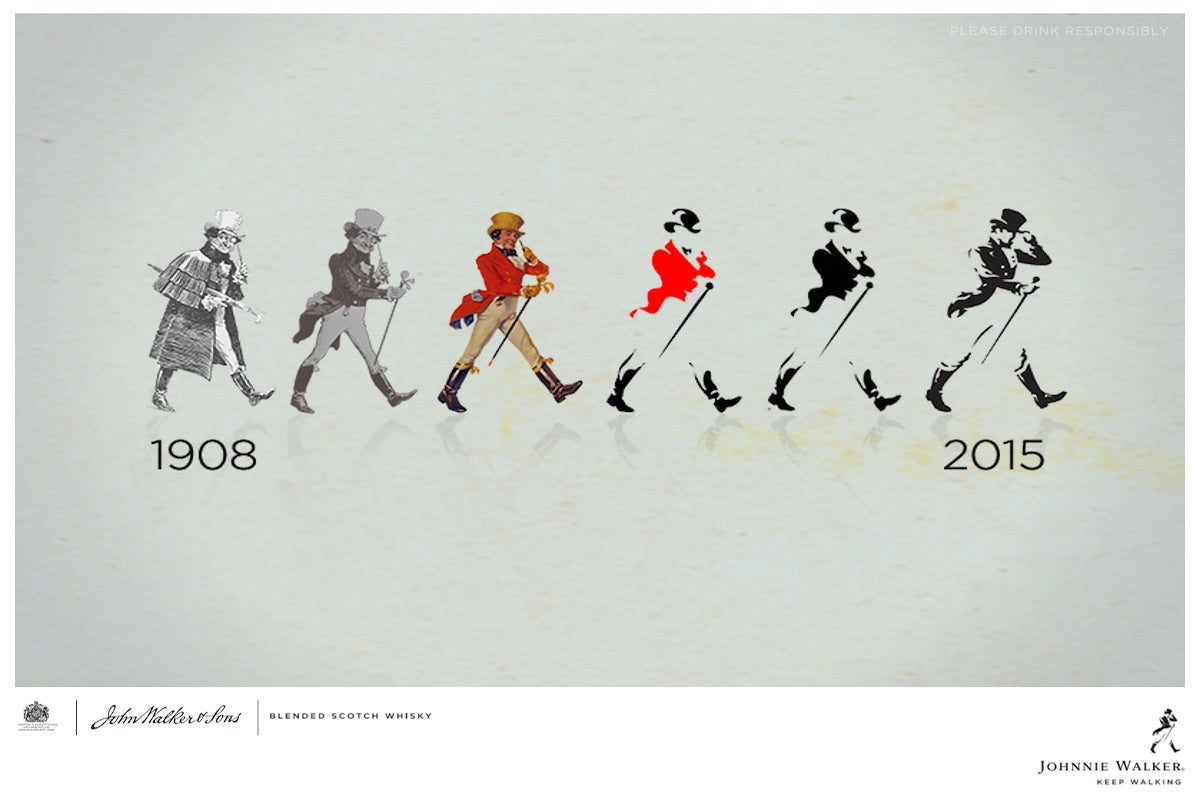A stride through the history of Johnnie Walker

A brief peek into the history of the world's best-selling Scotch, Johnnie Walker! From a grocer's shop in Kilmarnock to 20 million cases a year, it's been quite the journey.
Blended Scotch is often seen as a step down from the revered single malt (we don’t know why, we’re big grain and blend fans over here at Pour & Sip), but one brand in particular has always stood out as premium despite this: Johnnie Walker. It takes the title as the world’s best-selling Scotch whisky, selling nearly 20 million cases a year – a milestone which it reached back in 2013.
The story begins with John Walker in 1820, the year he opened his grocery shop in Kilmarnock. Whisky in those days was a far cry from the regulated spirit we find (and expect) now – single malts were patchily inconsistent at best. John stocked these whiskies, but decided to start blending them together to create a more consistent product, so his customers knew what they were going to get.

While John laid the foundations for the brand, it was his son Alexander who really propelled it towards the heights it’s reached today. It wasn't until 10 years after John’s death in 1857 that Alexander introduced Walker’s Old Highland Blend, (which inspired the 200-year anniversary Celebratory Blend you found in this month’s box), which laid the groundwork for the Red Label and Black Label expressions released in 1909.
It was also Alexander who introduced the famous square bottle and slanted label in 1867. The slanted label (at precisely 24°) wasn’t just a quirky gimmick, but also allowed for bigger text, making the bottle stand out even more behind the bar. The square shape, while adding to its recognisability, also allowed more bottles to be shipped at one time, and reduced breakage during transit. Anyone else wondering why we still have so many round bottles? Oh, and it was also Alexander who began to distribute the whisky globally, thanks to the introduction of that small convenience called the railway in 1843. It was Alexander who broke out of the safety of the domestic Scottish market, first setting his sites on London, and then the world.

The brand was formally known as John Walker & Sons, though consumers had been referring to it as Johnnie Walker for years. Eventually, following the death of John Walker's widow in 1890, the brand began to embrace its colloquial name. That being said, the iconic striding man didn’t make his first appearance until 1908, when cartoonist Tom Browne first sketched him on a napkin and he eventually made his way onto the bottles. This was clearly an exciting time for the marketing team, as in 1909 the whiskies were officially named after the label colours, with Red Label (originally a nine-year-old) and Black Label hitting shelves (alongside a short-lived White Label, which Dewar’s wasn’t letting slide). Again, the brand was leaning into what would have happened anyway, as it’s likely consumers would have referred to the whiskies by label colour anyway – but now it was official.

In 1925 it became part of the Distillers Company (DCL), which was to later become Diageo in 1997. This paved the way for the brand's first ever global advertising campaign, the ‘Keep Walking’ campaign, launched in 1999. Yes, it may have cost a cool £100 million, but it’s certainly stood the test of time, and it played a large part in getting the brand past that impressive 20 million case milestone. Nearly a century after the grocer shop first opened in Kilmarnock, Johnnie Walker’s home sadly lost its last physical ties, as the original plant was destroyed in 2012 – the whisky was still bottled there up until this point.
Seeing as it was a great deal of savvy marketing moves that got the brand to where it is today, what better way to finish than with a summary from Robert Carlyle? Here’s the timeless, popular Johnnie Walker advert from 2009.



